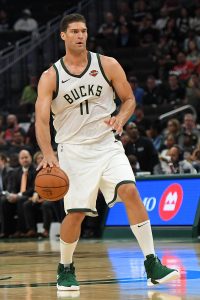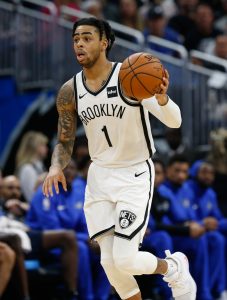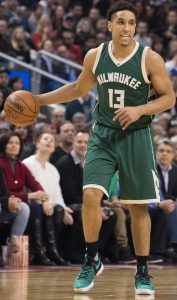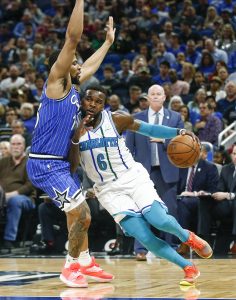The most common tool over-the-cap teams use to sign free agents from other teams is the mid-level exception, but that’s not the only exception those clubs have to squeeze an extra player onto the payroll. The bi-annual exception is a way for a team to sign a player who may command more than the minimum salary, but less than the mid-level.
As its name suggests, the bi-annual exception can only be used every other season. Even if a team uses only a portion of the exception, it’s off-limits during the following league year.
During the 2018/19 league year, three teams – the Pistons, Grizzlies, and Rockets – were ineligible to use the bi-annual exception at all, since they used it in 2017/18. Four teams have used the BAE this season, with the Bucks signing Brook Lopez, the Pelicans signing Elfrid Payton, the Knicks signing Allonzo Trier, and the Spurs signing Dante Cunningham. Those four clubs won’t have the exception at their disposal during the 2019/20 league year.
The bi-annual exception is available only to a limited number of clubs, even among those that didn’t use the exception during the previous season. Teams that create and use cap space forfeit the BAE, along with all but the smallest version of the mid-level (the room exception). Additionally, teams lose access to the bi-annual exception when they go over the “tax apron,” a figure approximately $6MM+ above the tax line. So, only teams over the cap and under the tax apron can use the BAE.
If a team uses all or part of the bi-annual exception, it triggers a hard cap for that season. Clubs that sign a player using the BAE can later go under the cap, but can’t go over the tax apron at any time during the season once the contract is signed.
The bi-annual exception allowed for a starting salary of up to $3,382,000 in 2018/19. Under the NBA’s previous Collective Bargaining Agreement, the value of each season’s bi-annual exception was determined in advance. However, under the current CBA, the value of the BAE in future league years is tied to salary cap increases. If the cap goes up by 5%, the value of the bi-annual exception will also increase by 5%. Based on a $109MM cap estimate for 2019/20, the BAE is projected to start at $3,619,000.
A player who signs a contract using the bi-annual exception is eligible for a one- or two-year deal, with a raise of 5% for the second season. For players who signed using the BAE in 2018/19, the maximum value of a two-year contract was $6,933,100. Teams also have the option of splitting the bi-annual exception among multiple players, though that happens much less frequently than it does with the mid-level exception, since a split bi-annual deal may not even be worth more than a veteran’s minimum salary.
The bi-annual exception starts to prorate on January 10, decreasing in value by 1/177th each day until the end of the regular season.
Several teams – including the Jazz, Clippers, and Magic – remain eligible to use the bi-annual exception this season, but they’re unlikely to take advantage of that opportunity at this point. Assuming those BAEs go unused, they’ll be available to those teams in 2019/20.
Note: This is a Hoops Rumors Glossary entry. Our glossary posts will explain specific rules relating to trades, free agency, or other aspects of the NBA’s Collective Bargaining Agreement. Larry Coon’s Salary Cap FAQ was used in the creation of this post.
Earlier versions of this post were published in previous years by Luke Adams and Chuck Myron. Photo courtesy of USA Today Sports Images.

 After nearly three years away from the NBA,
After nearly three years away from the NBA,  Shelvin Mack
Shelvin Mack